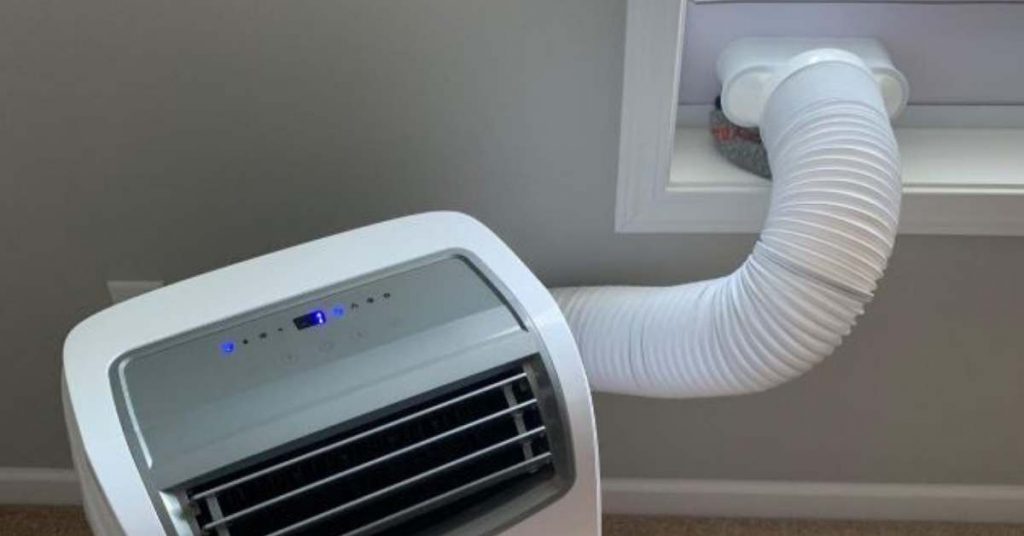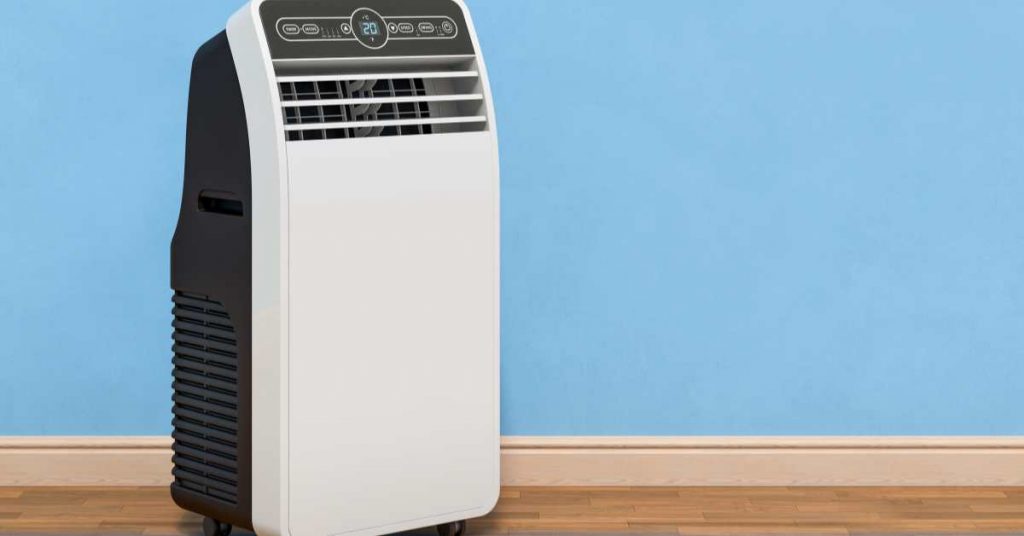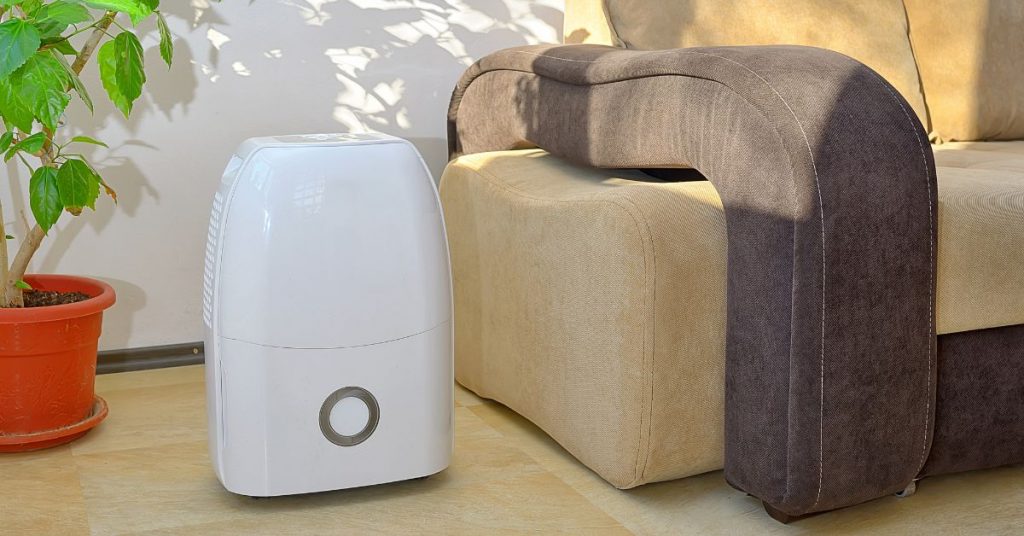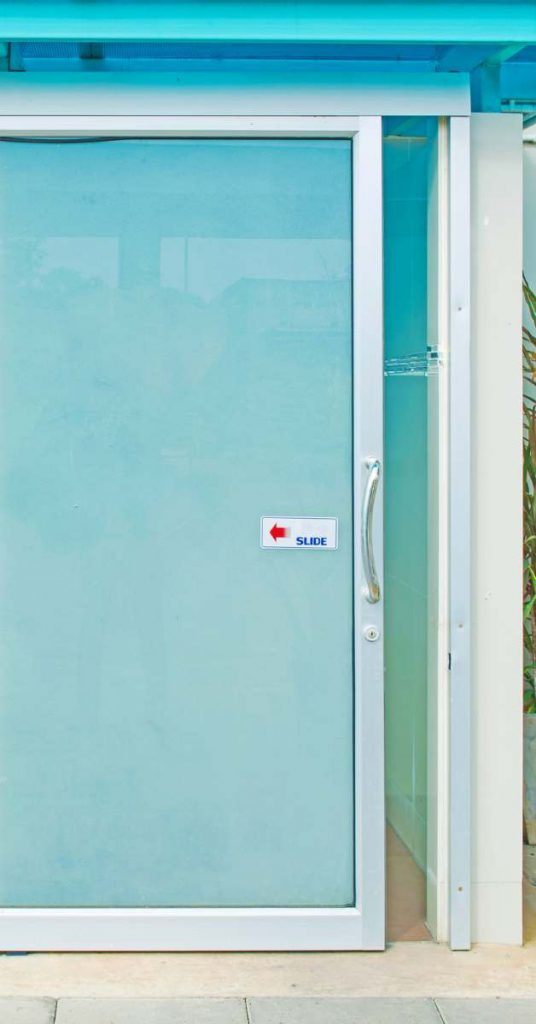
Using a portable air conditioner (AC) without an exhaust hose can be challenging since these units are designed to expel hot air through the hose. However, there are a few unconventional approaches that may allow you to use a portable AC without the standard exhaust hose:
- DIY Air Duct System: Create a DIY air duct system using flexible ducting or tubing, typically used for dryer vents. Connect one end of the duct to the portable AC’s exhaust outlet and direct the other end out of a window or an opening in the room. Seal any gaps around the duct to minimize air leakage. While this method can help expel hot air, it may not be as efficient as using an actual exhaust hose.
- Outdoor Ventilation: Position the portable AC unit near a window, door, or opening that leads to the outdoors. Use fans to help circulate the air and direct hot air outside. Be aware that this method may not provide efficient cooling, and the unit’s performance could be compromised.
- Bucket of Ice: Place a large container or bucket filled with ice in front of the portable AC’s intake. As the AC draws in air, it will pass over the ice, cooling the room slightly. While this won’t eliminate the need for exhaust, it can provide a temporary cooling effect in a small space.
- Swamp Cooler: Consider using a portable evaporative cooler, often referred to as a swamp cooler, as an alternative to a traditional portable AC. These units add moisture to the air while cooling it, and they don’t require an exhaust hose.
Why Portable Air Conditioners Need an Exhaust Hose
To understand why a portable air conditioner needs an exhaust hose, you have to first understand how portable air conditioners work.
Simply put, portable air conditioners and all other air conditioners remove heat from indoor air and dump it outside. That is why other types of air conditioners have an indoor and an outdoor unit.
The indoor unit absorbs heat from the indoor air while the outdoor unit releases it to the surrounding. The 2 units are connected using copper tubes and a refrigerant/Freon is circulated between them effecting the heat transfer processes.
Things are however a little different for portable air conditioners. All the components of the AC are in one unit, which is located inside the house.
To help remove the hot air from the unit, an exhaust hose is connected from the unit and vented out, usually through the window. New portable air conditioners come with an exhaust hose and a window installation kit.
With the hose in place, the heat removed by the air conditioner will be vented outside.
What Happens if You Use a Portable AC without an Exhaust Hose?

Just like other types of air conditioners, a portable air conditioner is made up of the following main components:
- Evaporator coil
- Compressor
- Condenser coil
The components are connected together using tubes which circulate a refrigerant between them. The refrigerant/coolant is responsible for cooling the indoor air by absorbing the heat inside the evaporator coil and releasing it inside the condenser coil.
The refrigerant enters the evaporator coil as a cold fluid. At that time, the AC fan will be pulling warm air from the room towards the AC.
The air is first cleaned using a filter and then passed through the cold evaporator coil. Due to the difference in temperature, the refrigerant will absorb heat from the air and that is how cooling happens.
Cool air is circulated back to the room. Since the refrigerant has a low boiling point, it will evaporate after absorbing heat from the air and exit the evaporator on its way to the compressor.
Inside the compressor, the refrigerant (now in its gas state) is compressed to increase its pressure. An increase in pressure also results in an increase in temperature as well.
From the compressor, the refrigerant then enters condenser coil. That is where refrigerant loses the heat it absorbed in the evaporator coil, and condenses back to its liquid state.
For that to happen, the fan will blow cooler air over the condenser coil which absorb heat from the refrigerant. After absorbing the heat, the air will be quite hot and that is why we need an exhaust hose to vent it to the outside.
Without an exhaust vent, the hot air will be circulated back to the house. In essence, the air in the room will continuously be going through cool and hot cycles and may even become hotter than it was due to the heat generated by the AC itself, apart from also being expensive to run.
How to Use a Portable Air Conditioner without an Exhaust Hose

Have you ever heard of the phrase “It’s not the heat; it’s the humidity”? Why do folks say that? What is the relationship between humidity and heat?
If you don’t already know it, high humidity can make it feel hotter than it actually is. That is why you will hear of terms like heat index, apparent temperature and “feels like temperature”.
High relative humidity means that the air is saturated with moisture. The moisture in the air prevents our bodies from perspiring properly and that is why it feels really hot when humidity is high, usually in summer.
By reducing humidity to comfortable levels (30-50%), our bodies can cool off easily on their own and the air in the room will then feel way cooler than when humidity was high.
Air conditioners do not only cool the indoor air but they also dehumidify it. Hot air can hold more moisture than cold air. Therefore, when you cool air, the moisture in it condenses back to its liquid state.
And that is exactly what happens when cold indoor comes into contact with the cold portable AC evaporator coil. As the air is being cooled, the moisture in the air condenses and drips into a collecting tank or bucket at the bottom of the unit and that is why portable ACs need to be emptied.
To improve efficiency and reduce the frequency of emptying them, portable AC use most of the condensate to spray and cool down the condenser coil. The condensate evaporates and is vented out together with the hot air through the exhaust hose.
So, how can you use a portable air conditioner without an exhaust hose?
To use a portable air conditioner without an exhaust hose, you need to set it to the “dehumidifier mode”. With that setting, the air conditioner will not cool the air but it will reduce the indoor humidity.
Also, the condensate will not be used to cool down the condenser coil but instead it will collect inside the collection tank. By reducing the humidity, the indoor air will feel cooler even though the air temperature will be same as before.
The only challenge with this method is that you need to empty the condensate tank regularly since it is not as big as that of a dehumidifier. However, you can connect a drain hose to the AC so that it drains the condensate out on its own.
Or Just Buy a Dehumidifier

If you haven’t bought the portable air conditioner yet, you should probably just buy a dehumidifier. While a portable AC is primarily made to cool the air, a dehumidifier’s only job is to reduce humidity. And it does it so well.
The difference between a portable air conditioner set on dehumidifier mode and a real dehumidifier is that a portable AC will only reduce humidity to some degree but a dehumidifier will dehumidify precisely up to the level you want it to be.
The indoor air will therefore feel cooler if you have a dehumidifier than if you have a portable air conditioner running on the dehumidifier mode.
It is also worth remembering that dehumidifiers are not as expensive as portable ACs and also use less electricity. Check out this post on the differences between dehumidifiers and air conditioners.
Consider a Swamp Cooler
If you live in Arizona, Utah, Nevada, New Mexico or any of the other arid areas in the United States, high humidity will hardly ever be a problem for you. What will be important for you is to cool down the air since it is quite hot there.
In such a situation, setting the portable AC to the dehumidifier mode or buying a dehumidifier will not help. After all, there is no excess humidity in your house to remove.
What you can do in such a situation is to consider a swamp cooler, also known as an evaporative cooler. These units use water and the natural evaporation process to cool air.
Since these units looks every part like portable air conditioners, they are commonly known as ventless portable air conditioners. The truth of the matter however is that they are not air conditioners in as far as we know ACs and how they work.
Swamp coolers work using a very easy process. Why do you feel cool when you stand close to a water body even when it is hot? Because the water cools the surrounding air as it evaporates. For water to evaporate, it has to absorb heat from the surrounding.
Swamp coolers have a fan, cooling pad and a water reservoir. The fan pulls warm air from the room and passes it through the moistened pad.

As the air passes through the wet pad, the moisture in the pad absorbs heat from the air. Cooled air emerges from the other end of unit. Swamp coolers can be ducted to cool the entire house or used to cool a single room.
Since the evaporation process creates humidity, you need to open one window to exhaust the humid air and bring in fresh and dry air. Swamp coolers are excellent for arid areas but not recommended for humid areas like Florida since they would increase the humidity in an already humid area.
Other Ways to Use a Portable Air Conditioners without an Exhaust House
You first need to start by yourself why your portable AC doesn’t have an exhaust hose.
- Did you buy a portable AC without a hose?
- Is it that you don’t like the appearance of the hose?
- Could it be that the room you want to install the AC does not have a window?
If the room you want to install the portable AC does not have a window, there are several ways you can install a portable AC without venting it through the window. Check out this post for more details.
For any other reasons, these are some of the ways to use a portable air conditioner without an exhaust hose if you don’t want to run it in the dehumidifier mode only. They will reduce the efficiency of the air conditioner but it will still cool the house.
1. Place the AC into a Door Gap

Portable air conditioner exhaust hose are about 6 inches in diameter, coming out of the unit’s rear. What you can do is open the door so that you leave 6-inch gap (preferably if you have a sliding door leading outside).
You will then lift the portable air conditioner and place it next to the door gap, making sure that you align the exhaust opening at the back with the gap on the door.
2. Place the Portable AC next to the Window
You can place the portable AC on a window sill or fasten it against the window so that it works like a window air conditioner. The hot air from the air conditioner will be vented through the window.
Just like with the above method, cool air will leave the room while hot air will enter the room since there will be any form of sealing. This will greatly lower the efficiency of the portable AC.
3. Drill a Hole through the Wall
Another thing you can do is to drill a hole through the wall then place the portable air conditioner next to the hole. You may want to explore other methods if you are renting your home or the wall you need to drill is made from concrete.
If you are happy to proceed with this method, just drill a 6-inch hole through a wall leading to the outside then align the AC exhaust opening with it. Hot air from the AC will be easily vented out.
The good thing with this method is that since the hole is smaller compared to a door gap, there will be less movement of air between the inside and outside of the house so efficiency will not be greatly compromised.
Wrap Up
And basically that is how to use a portable air conditioner without an exhaust house. I hope that this guide was helpful.
